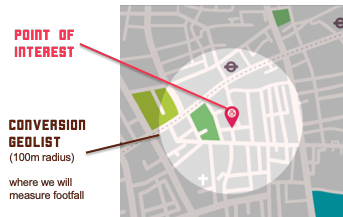Blog
Announcements, analysis and opinions on industry trends around the mobile programmatic world.

Subscribe now, and receive the latest programmatic content directly on your inbox!
Thank you for subscribing to our newsletter
Are you using a programmatic location-based solution to measure visits to your store? Going under 100m precision radius for your footfall measurement is nearly impossible. It's not us, it's the ecosystem. Let us show you why.
Any programmatic solution would get the location information of the app user from the publisher. The truth is, getting this type of information requires a lot of battery from the user device, that's why publishers won't refresh the signal more than once every minute (this on the best cases). On the other hand, a person walks in average between 80 and 100 meters in one single minute. No math needed, trusting more than a 100m precision is pointless. And I'm sure you have had to confirm location for a pick up using any "Taxi-Uber" app and that is when you're actively giving your location.

We could speak about other inherent issues, like the lack of verticality in the GPS signal or privacy concerns. We could elaborate for hours about specific cases, such as one where the user sees the ad, visits the store but we can't track because the phone run out of battery; the neighbour living on top of the store or the passers-by that we can't avoid measuring. The important thing to understand is that, attributed visits - the measured conversions - are not necessarily 'real visits' to your store.
So, you will be thinking: what's the interest of using this type of solution with that limit? Easy to say in the case of mediasmart, as we also measure incrementality. We compare the behavior of a control group, to whom we don't show the campaign, with the behavior of those who viewed the ads. Then we can calculate the 'incremental visit%', amongst other KPIs, to show the real impact of your drive-to-store campaign.
You can learn more about mediasmart's ready to use drive-to-store measurement solution that uses the bidstream and it's a real-time and global solution. We recommend you check our one pager about measurement precision in Drive-to-store.
Topics: proximitycampaigns, footfall, drive-to-store
%20(1).jpg)

